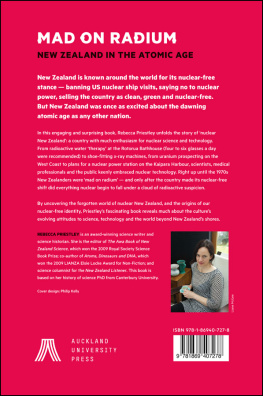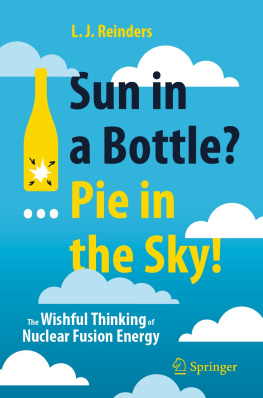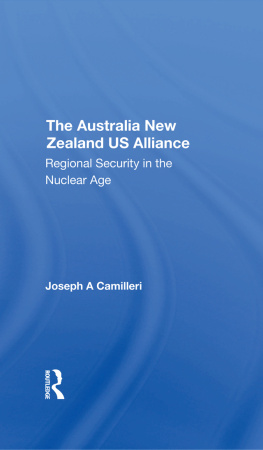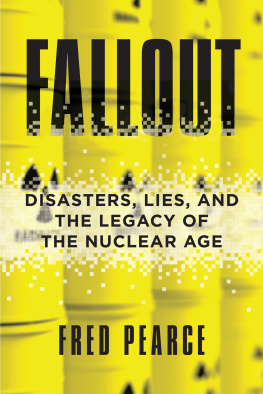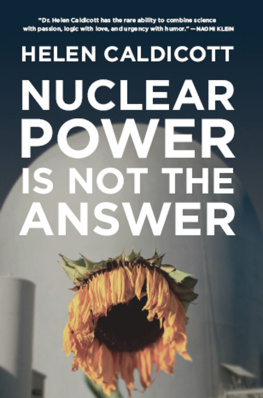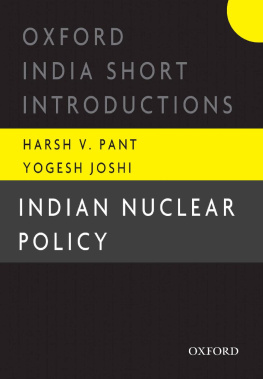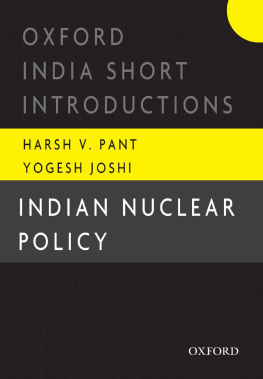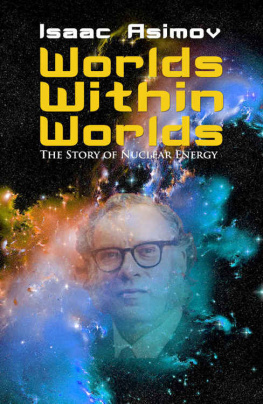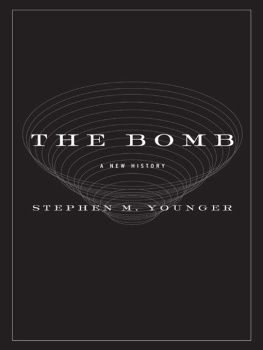MAD ON RADIUM
NEW ZEALAND IN THE ATOMIC AGE
REBECCA PRIESTLEY
For Jonathan
CONTENTS
Myth or reality?
Rutherford, New Zealand and the new physics
The atom bomb and the dawn of the atomic age
The nuclear age comes to the Pacific
Uranium prospecting on the West Coast
Safety and public exposure to radiation
Nuclear science in New Zealand in the atomic age
Plans for nuclear power
Becoming nuclear-free
Can we take it for granted?
PREFACE
Nuclear-free New Zealand
Myth or reality?
our nuclear free status has become a defining symbol of our national identity.
PRIME MINISTER HELEN CLARK, 28 NOVEMBER 2007
New Zealands nuclear-free status is a myth
ACT MP KEN SHIRLEY, 27 JULY 2005
Like most New Zealanders of my generation, I am a proud supporter of our countrys stand against nuclear weapons. As a teenager in the 1980s I marched against visits by American nuclear warships to Wellington. When I travelled through the United States in the late 1980s, I was happy with the positive recognition that New Zealands nuclear-free policy got me and was just as happy to argue with people who took umbrage at our stand. But then my career exposed me to a nuclear side of New Zealand that most of my contemporaries did not see. A few years after completing a degree in earth sciences, I worked for several months as a journalist for the Institute of Geological and Nuclear Sciences (IGNS), a Crown Research Institute that incorporated the former Department of Scientific and Industrial Researchs (DSIR) Institute of Nuclear Sciences. For the rest of the 1990s, I continued doing contract work for IGNS, writing for annual reports, newsletters and marketing brochures, mostly about geological projects but sometimes about nuclear science. It was during this time that my friend Steve Menzies lent me his copy of Catherine Caulfields 1989 book Multiple Exposures: Chronicles of the Radiation Age, and suggested there might be some New Zealand stories to uncover. I soon bought my own copy of the book and a seed was sown. It was from this position, and with a growing awareness that New Zealand had a nuclear history, that my interest in writing this story emerged. In 2001, I enrolled as a part-time PhD student in the University of Canterburys history and philosophy of science programme.
The whole time I was enrolled, the most common response to telling people I was doing a PhD thesis on New Zealands nuclear history was surprised laughter and the comment that it must be a very short thesis. I was happy to prove them wrong it would have been a disappointing thesis if I hadnt. As I trawled through the pages of government archives, read through old newspapers on microform readers, and interviewed retired scientists now in their seventies, eighties and nineties, the story took shape.
I was already familiar with New Zealands nuclear-free story, one that has been told in many books, articles and documentaries. New Zealands nuclear-free identity is strong, and most New Zealanders support the nuclear-free policy. From a grassroots movement that began with opposition to nuclear bomb testing in the Pacific and later extended to opposition to visits from nuclear-armed and nuclear-powered warships and the creation of local nuclear-free zones, the New Zealand Nuclear Free Zone, Disarmament and Arms Control Act of 1987 created a nuclear-free zone that prohibited nuclear weapons and nuclear warships in the countrys land, air and water. In the years that followed, governments and the New Zealand public began to interpret the nuclear-free policy more widely. In 1996, a Minerals Programme issued under the Crown Minerals Act prohibited uranium mining and prospecting for uranium. And in 2005, in response to calls for nuclear power to meet New Zealands future electricity needs, the Labour Government stated their clear policy of no nuclear power stations. This nuclear-free status, initiated by a Labour Government in the 1980s, is now recognised by all major political parties, and is a reflection of a strong nuclear-free national identity.
But I discovered over the course of my research that, while being nuclear-free is now hugely important to most New Zealanders, it is different from other posited national traits (like a talent for ingenuity or a passion for rugby) in that it is a relatively recent addition to our national story. My research revealed that apart from New Zealands public and governmental opposition to nuclear bomb testing in the Pacific a broad all-encompassing nuclear-free ethos was not strongly apparent before the events of 1985, when Prime Minister David Lange refused to allow the USS Buchanan access to New Zealand ports, and when French agents bombed the Greenpeace ship Rainbow Warrior while it was berthed in Auckland. I found a lot of early enthusiasm for nuclear science and technology: from the first users of x-rays and radium in medicine; the young New Zealand physicists seconded to work on the Manhattan Project; the plans for a heavy-water plant at Wairakei; prospecting for uranium on the West Coast of the South Island; plans for a nuclear power station on the Kaipara Harbour; and the thousands of scientists and medical professionals working with nuclear technology. Put together, they provided an alternative history of a nuclear New Zealand.
By examining New Zealanders consideration of aspects of nuclear science and technology like nuclear medicine, nuclear power, and uranium prospecting and examining the reasons why they were or were not adopted or accepted, I discovered that throughout most of the twentieth century it was economic considerations that tended to dominate public and official attitudes and decisions when it came to things nuclear. There is nothing unusual about this: Australia and Canada developed uranium-mining industries because it was economically advantageous; New Zealand did not develop a uranium mining industry because it was economically unviable. But this led to the realisation that, had economic factors suggested different decisions be made, New Zealand might not today have such a strong nuclear-free identity. In the late 1970s, less than a decade before becoming so proudly nuclear-free, New Zealand was considering nuclear power to meet the growing electricity demand in the North Island. In 1978, a Royal Commission of Inquiry rejected the immediate development of nuclear power for New Zealand, not in response to anti-nuclear sentiment, which did exist, but because a reduction in projected electricity demand and the recent discovery of the Maui natural gas field meant New Zealand had sufficient indigenous resources to meet electricity needs until the end of the century. I also discovered a previously untold story of the history of uranium prospecting in New Zealand, and found that, while New Zealand never mined uranium, this was not because of a moral decision not to provide materials for the international nuclear power and weapons industries. Rather, it was because no economically viable deposits of uranium were ever found, despite 35 years of uranium prospecting initiated by the DSIR and supported by the New Zealand and British governments.

